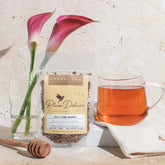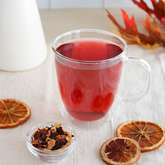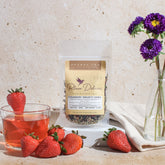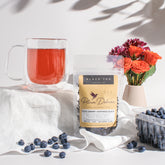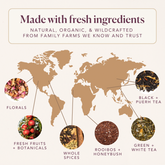
Why Tea Storage Is Important
From the very moment they are picked from the plant, tea leaves start to deteriorate by a process called oxidation (caused by the leaves being exposed to the air). Just as other fruits and vegetables eventually turn brown when exposed to oxygen, tea leaves go through a similar process after they are harvested.
The great news is that properly storing your tea can slow down the oxidation process long enough for you to finish your tea before any noticeable deterioration occurs.

Luckily, storing tea is very simple, so long as those precious leaves are protected from the following elements: oxygen, heat, light, strong odors, and moisture. When it comes to tea, storing it in airtight containers in a dark, cool, dry place will give you ample opportunity to finish those lovely leaves before the degradation of aroma or taste begins.
It’s also important to note that the more tea you can keep in an enclosed space, the less oxygen will be trapped inside (making it harder for the tea to absorb the scents around it).
So load up those tins of tea as much as possible by filling to the brim and gently shaking it so the leaves settle and allow room for more. And dividing tea leaves into smaller containers can allow you to enjoy smaller amounts now while you safely store the rest for later.
It just so happens that metal tins of tea not only meet all the above criteria to help protect tea leaves but are also historically the way in which tea was stored in Britain.

The History of Tea and Tins of Tea in Britain
The first account of tea sales in England was in 1657, starting a pivotal turn in the history of Britain in the late 18th and 19th centuries. Tea was first only sold in apothecaries, coffee houses, snuff shops, and by merchants who sold feminine goods.
During the first half of the 18th-century tea was heavily taxed, which caused this rare and precious beverage not only to be extremely expensive but also most affordable to the wealthy. Because tea was such a valued commodity, those who could afford it wanted to both preserve and keep it protected. Thus, the tea caddy was created to solve this very problem.
When the caddy hit the scene in Europe in the 1700’s they were made from Chinese porcelain and looked similar to ginger jars (also known as spice jars). These fragile jars typically came with lids or stoppers and were ornately decorated in traditional Chinese ceramic art.

Tea caddies became popular, as they were made from the finest top quality materials and said to epitomize the most elite examples of craftsmanship. Of all of the wide array of materials and designs to use, the most common construction was ornately decorated and lacquered wood.
The most common tea caddies are now classified as Early Georgian Mahogany Caddies, which are rectangular boxes made of quality mahogany that feature locking lids and bracket feet. Inside these elegant wooden caddies were sections with fitted metal containers made from tin, pewter, and brass (or something silver) which eventually gave birth to our beloved tins of tea that we know and love today.
For over 300 years, tins of tea have been the chosen solution for preventing oxidation and preserving tea's fresh, vibrant flavor, which just goes to show that sometimes traditions are well worth keeping! Tea tins make it incredibly easy to safely store your tea. Thankfully, the only hard part is deciding which tins and canisters go best with your decor!
It’s also very clear that enjoying a cuppa is a simple pleasure that, just like the act of safely storing the tea itself, will continue to endure for generations to come. Luckily Plum Deluxe helps us cover both avenues of enjoyment with their vast selection of exquisite loose leaf teas along with ceramic canisters and tins of tea in which to store those pleasant leaves.

![Holiday Tea Variety Pack [6-Pack Variety of Flavors]](http://www.plumdeluxe.com/cdn/shop/files/holidayTeaVarietyPack.png?v=1759777907&width=165)


